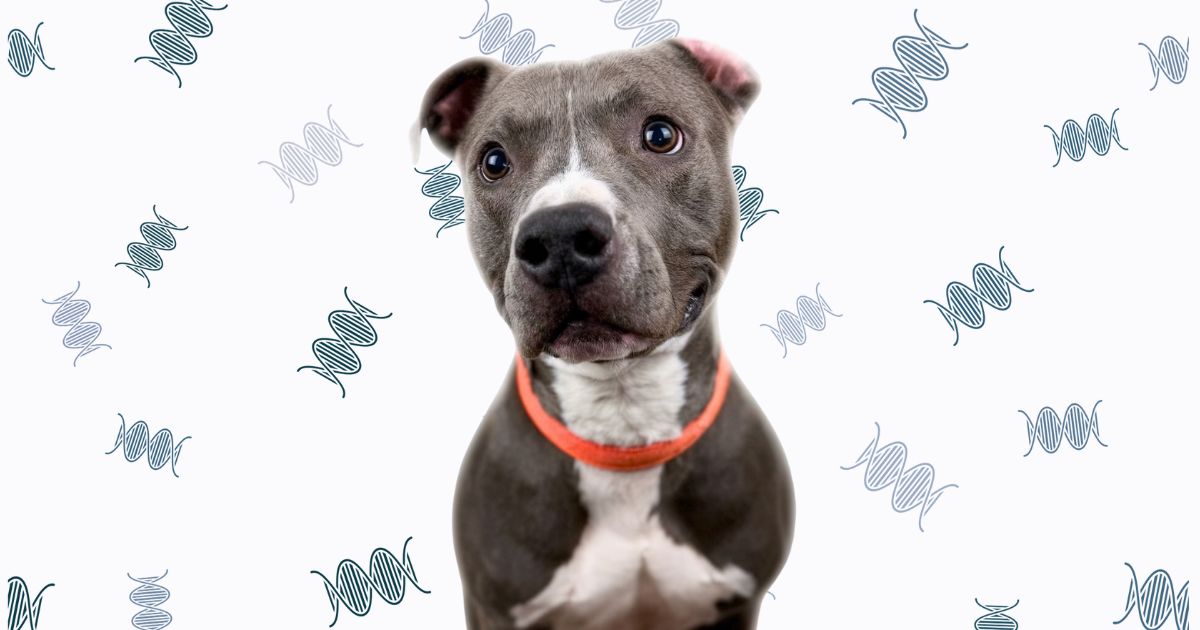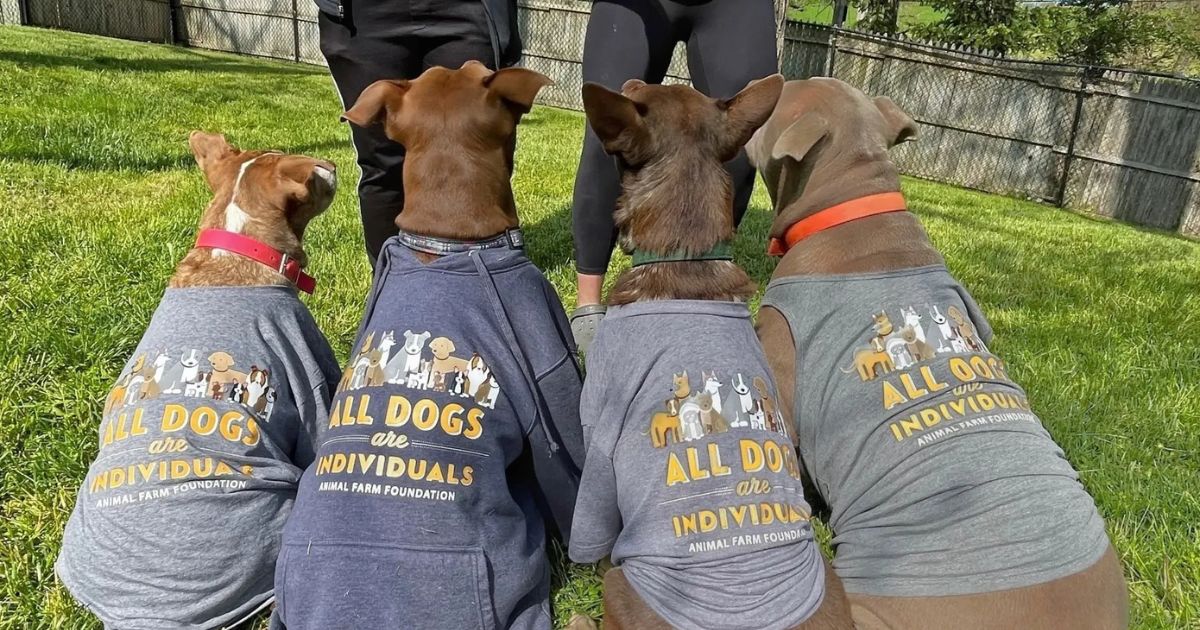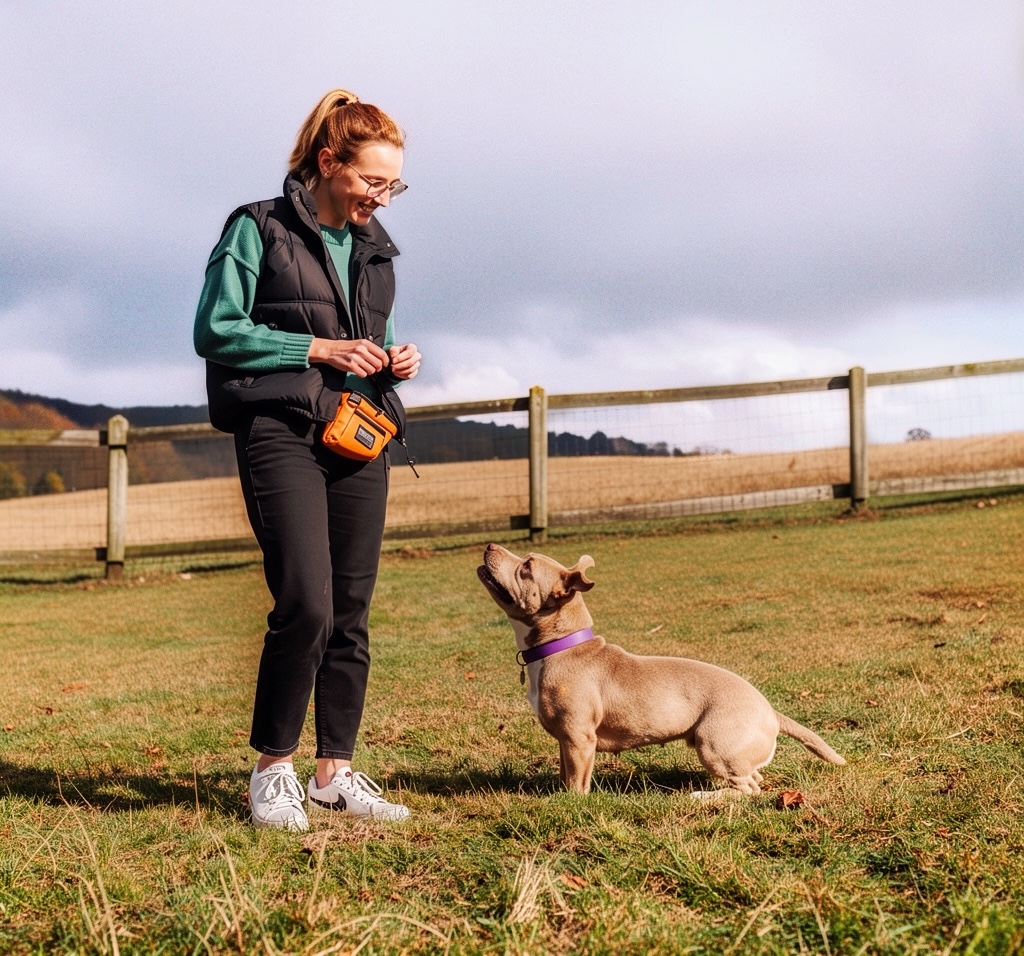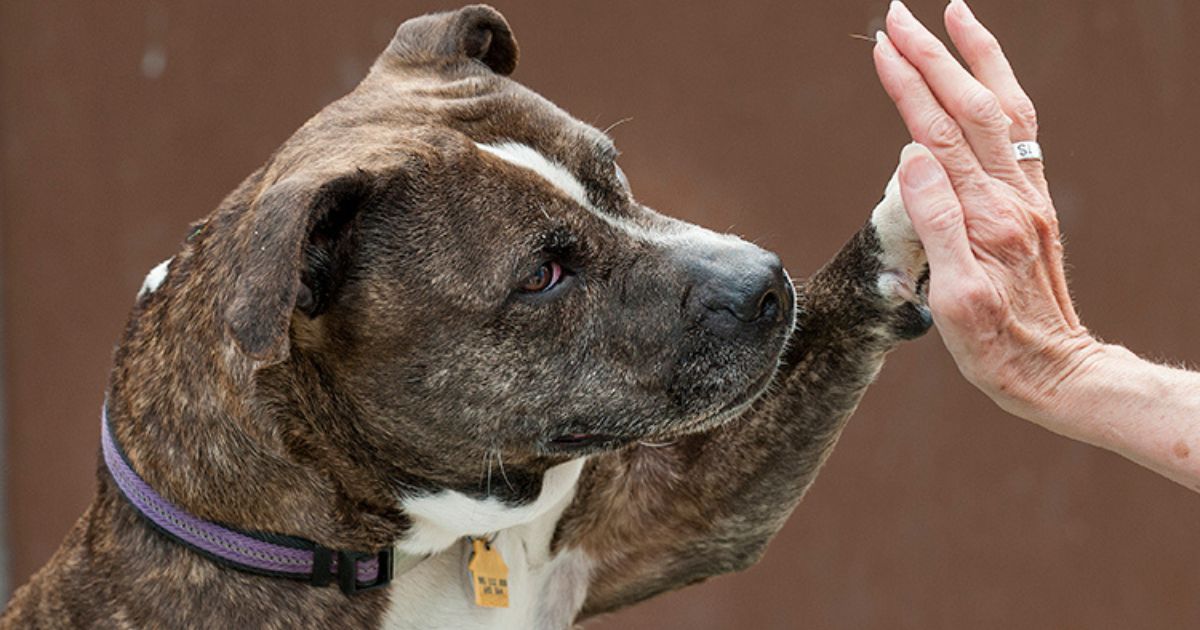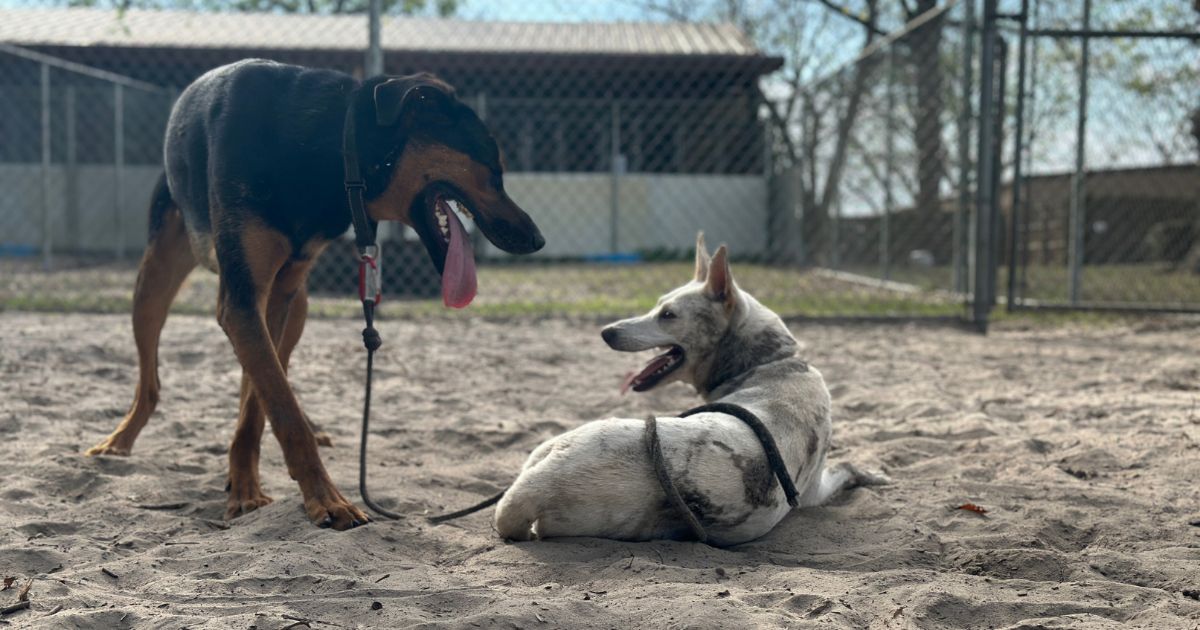***Updated September 2022***
Although AFF is a national organization, it’s important to us that we stay active in and support our local community. We could have started our own pet food pantry to help offset people’s financial hardships, but we didn’t. Instead, we expanded our existing partnerships with local food pantries that provide food to people.
Here’s why.
Pets are family. Why should we create separat food pantries for them?
We sometimes forget that dogs live within the context of human life. That’s why they are called companion animals. But when we forget this, we end up creating barriers to the human-canine bond. This includes adoption barriers, often rooted in classism and racism among other things, spay-neuter mandates, and even breed-specific legislation.
Stick with us for a bit, because we realize it seems like a big leap to put pet food pantries on the same level as adoption barriers. We need to remember that intent does not equal impact. While the intentions to create a standalone pet pantry come from a genuine desire to help people, what does this action signal to society at large?
What it says is that a pet’s needs are separate from their family’s needs. By doing so, we’re inadvertently saying that pets are not the same as human family members.
Since 2020, we have donated over $80k in food and veterinary services to 9 local food pantries, 5 of which we serve on a weekly basis.
At AFF, to carry out our mission, we push for landlords, crisis shelters, insurance companies and policy makers to include pets as family. We aren’t the only ones doing this, so why are we, as an industry, the authors of a system that signals to society that pets exist independently of their human companions?
It took one encounter to make our executive director, Stacey Coleman, realize that we needed a holistic, not separate, approach to providing food to dogs and people. Once, while working with a local pet food bank, Stacey encountered a woman who was regularly coming in for cat food. But the food wasn’t only for her cat. She was eating it, too. This woman needed access to proper human services in addition to pet services.
What are pet services if not family services?
While the work done in companion animal welfare does make a dramatic impact on the lives of dogs and people, it does have limits. Very few of us have a background in social work. As such, the majority of us are not the least bit equipped to recognize the signs of a human in crisis – or how to handle it appropriately when/if we do recognize them.
We don’t know why the woman mentioned above wasn’t seeking out social services. We can only speculate. What we do know is that people in need often feed their pets before themselves. We also know that services are often inaccessible to the people who need it most. When we separate a pet’s need for food and their family’s need for food, we’re creating accessibility barriers. Now, a person has to go to two places to meet their family’s needs. If we didn’t create this division, we would eliminate a barrier. The fewer barriers people have, the more likely they are to get the services they need.
Here are some tips for working with food pantries
Coordinating with existing food pantries isn’t always easy. We ran into some obstacles at first. Just like we talked about earlier, it can take a lot to convince people that we shouldn’t marginalize pets as something other than family.
When faced with questions like, “Why should we make space for pet food when children are going hungry?” we answered with, “because those children love their pets and they don’t want to lose them as family members.”
We took a collaborative approach to make sure that the people who worked or volunteered at the pantry didn’t see us as obstructionists or as people invading their space. We worked with them to meet their needs and constraints.
Here are some of the things we learned:
- Large bags of food are cheaper to buy, but not always the best choice. Space is limited in food pantries and the bags are heavy to move. We troubleshoot by separating food into ziploc bags ourselves. If this isn’t an option, we provide the bags to the pantry and they separate it for their patrons.
- Along these lines, it’s better to make frequent, smaller deliveries instead of one large delivery because space is often limited.
- We ship food directly to the pantries, so there is no need to coordinate drop-offs.
- When necessary, we provide shelving that’s on wheels. Many food pantries are set up in a shared public space so keeping set up and tear down easy is essential.We don’t limit our donations to dog food and supplies.
- We include all kinds of food choices including bird, rabbit, guinea pig, hamster, etc. Since we are in a rural area, we also let the pantries know that if feeding large animals is a challenge for patrons, they can contact us for hay delivery.
- If you are using food donated to the animal shelter to supply the pantry, don’t marginalize the patrons by only offering torn bags, etc.
- Be cognizant of the dietary issues of some pets. Do what you can to provide for them, as well. Include a consistent supply of mid-grade dry food for the pets who may be prone to gastric upset by low quality or constantly changing food. You don’t want add to the woes of the food pantry patrons by supplying food that will make their pets sick.
- Leashes and collars should be made available as should quality topical flea treatment in single doses.
- Most pantries have a literature section for additional services, so put up a flyer for low cost veterinary options.
As a shelter, you likely have a pool of donors who would love to help you with this project. Remember that you can engage them by making a wish list with specific brands and sizes of food.
Ask donors to order online and ship items to you so you can deliver them to the food pantries. Include canned food for both dogs and cats as well as kibble, small bags of cat litter, etc. Treats are great because who doesn’t want to give their beloved pet a treat? Avoid toys and chew bones (choking hazards and reasons to resource guard).
We also spend time working with area dog wardens/animal control to make sure that pet owners have access to the care they need to keep families together.
All of the work we do in animal welfare should, at its heart, be about pets being a part of people’s families. That’s how we accomplish our goals.

